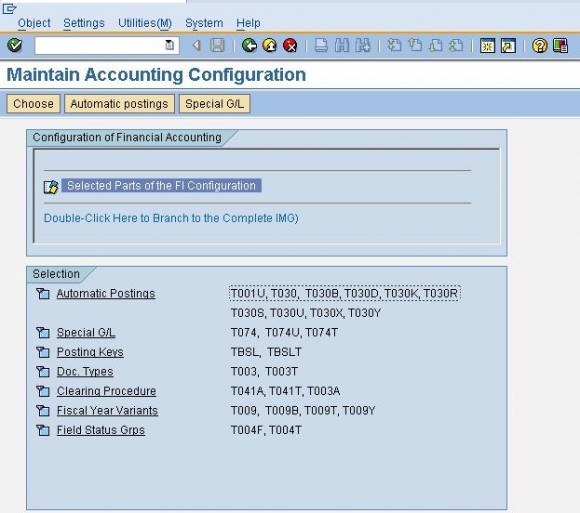LEARN ABOUT SAP SPECIAL GENERAL LEDGER TRANSACTIONS
Introduction To Sap Special General Ledger Transactions
All the transactions carried out by a business must be reflected in the general ledger accounts in order for them to be available and displayed in the financial statements like the balance sheet or the profit and loss statement. The vendor and customer accounts are created as sub ledger accounts. These are linked to the general ledger by means of the vendor and customer reconciliation accounts respectively.
Therefore, if any entry is passed to any of the vendor or the customer account, then a duplicate entry is passed to the corresponding reconciliation account in the general ledger.
It is necessary at times to post some special transactions related to vendors and customers to general ledger accounts, other than the vendor and customer reconciliation accounts. This allows the special transactions to be displayed separately in the general ledger as well as the sub ledger. Such a requirement may arise because of statutory reporting requirements or for some other internal reasons.
For example, in normal general ledger transactions, the accounts payable is netted against the accounts receivable for a partner who acts both as a vendor as well as a customer while executing the automatic payment program. But in case of certain special transactions like down payments, the down payment amount must not be netted with the receivables or payables. Therefore, a transaction like down payment must be considered as a special general ledger transaction.
In order to record the special general ledger transactions separately from the normal general ledger transactions, alternative reconciliation accounts are defined. The special general ledger transactions are then posted to these alternative reconciliation accounts in the general ledger. This allows the balance of these transactions to be displayed separately on the balance sheet.
The following major special general ledger transactions are available in the standard SAP system. The special general ledger indicators used to identify the special general ledger transactions are mentioned in the brackets:
- Down payments (A)
- Down payment requests (F)
- Bills of exchange receivable (B)
- Letter of Credit (L)
- Payment requests (P)
- Guarantees (G)
- Reserves for bad debt (E)
- Security deposits (H)
Different Types Of Special General Ledger Transactions
The special general ledger transactions are categorized into different types on the basis of business as well as technical factors. This results in two different classifications of special general ledger transactions.
The business related factors represent the main purposes of the special general ledger transactions are used. On the basis of the business related factors the special general ledger transactions can be categorized into the following three types:
- RELATED TO DOWN PAYMENTS: The down payment requests and down payments are the special general ledger transactions provided by SAP to deal with business scenarios where an advance payment is made by a customer or is made to a vendor, for future delivery or receipt of products and services respectively.
- RELATED TO BILLS OF EXCHANGE: Bills of exchange are used by businesses when transporting goods across countries. These special ledger transactions are provided by SAP to deal with business scenarios where businesses are involved in exchange of goods across countries via the banking channel using bills of exchange.
- OTHER SPECIAL GENERAL LEDGER TRANSACTIONS: SAP allows other special general ledger transactions such as Security deposits, etc. to be configured as per the requirements of the business. These configurations can be done by defining the special G/L indicator, posting keys and the alternative reconciliation accounts.
On the basis of technical factors the special general ledger transactions can be classified into the following three categories:
- REAL POSTINGS: These are special general ledger transactions which have freely definable offsetting entry account. They usually form an item on the balance sheet. E.g. down payments. These postings are reflected in the line-item display of the sub ledger accounts and affect the overall balance of the sub ledger accounts.
- STATISTICAL POSTINGS: These are special general ledger transactions where the offsetting account always remains the same. The offsetting account can be defined while configuration of a statistical special general ledger posting. The system then posts the offsetting entry automatically to the offsetting account defined during the configuration.
- NOTED ITEMS: These items serve as a reminder about the payments which are to be made or payments which are to be received. They are not displayed in the accounts but can be processed using a Dunning or payment program. These special general ledgers postings do not update the account balances and merely appear in the account line-item reports as an open item. These open items act as a reminder about the pending payments.
Configuring Special General Ledger Transactions
STEP 1: The special general ledger transactions are identified by means of special G/L indicators. Execute the transaction code FBKP to display the screen as shown below.




